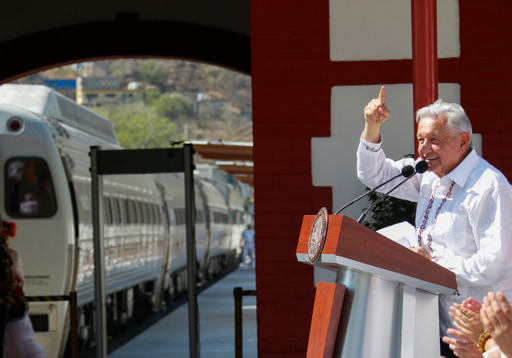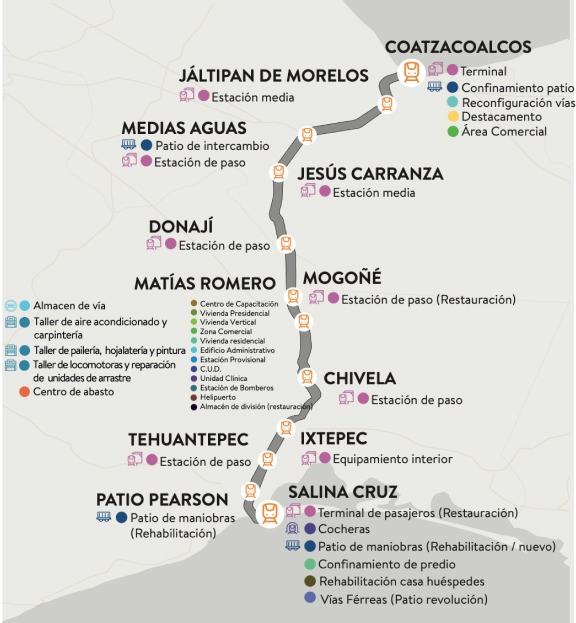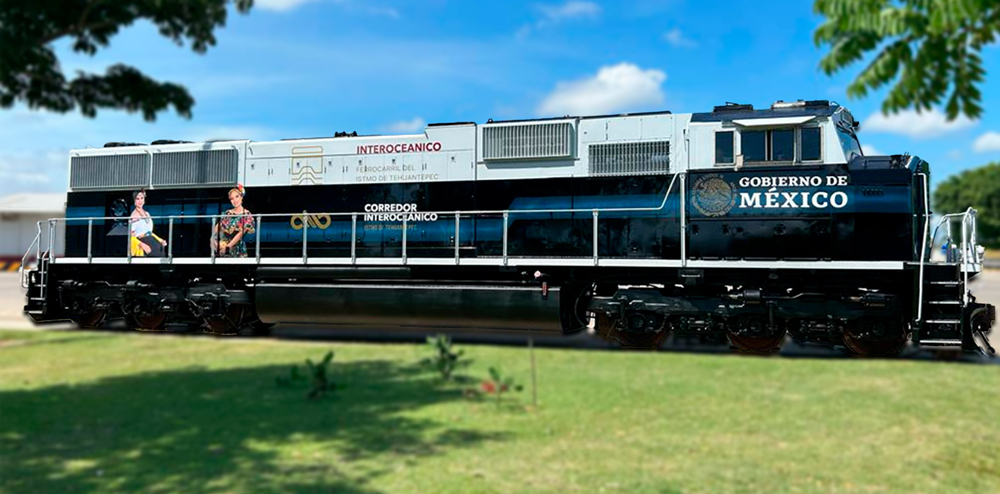
SALINA CRUZ, Mexico — For the second straight week, Mexico has inaugurated passenger service on a new rail line.
On Friday, operations began for the Interoceanic Railroad, a 188-mile route connecting Coatzacoalcos, on the Gulf of Mexico, with Salina Cruz, on the Pacific Coast. It is the key piece of the Interoceanic Corridor of the Isthmus of Tehuantepec, a $2.8 billion project that also includes expansion of the ports at the two endpoints, as well as creation of a series of industrial parks and upgraded highways.
The rail line and corridor have been championed by President Andrés Manuel López Obrador, who also led the construction of the controversial Maya Train line that opened last week [see “Long delays, late trains mark start of Maya Train service,” Trains News Wire, Dec. 17, 2023]. A branch line connecting the Interoceanic Corridor and the Maya train is slated to be completed next year.

López Obrador marked the line’s opening at an event in Salina Cruz, Mexico News Daily reports, before making what was expected to be an 8-hour trip on the first train to Coatzacoalcos.
While the route will feature passenger service, its primary objective is to provide a freight alternative to shipping through the Panama Canal. Freight service will begin at a later date.
“All the Asian countries are very interested,” López Obador said Friday, according to a Reuters report, “because Panama is at capacity.”
López Obrador said Mexico’s navy would manage and provide security for the corridor project. The army has a similar role with the Maya Train.
Tickets for the passenger service are priced at approximately $27 for tourist class over the full length of the 10-station line, with executive class costing $36 and first class $91. Trains feature a mix of equipment from the UK and the United States [see “Passenger equipment from Britain, US heads to Mexico,” News Wire, Sept. 4, 2023]. Tickets for the remainder of this year are sold out, Mexico News Daily reports. More information is available at the train’s website (in Spanish).
Part of the Interoceanic route includes a line seized by the government from Grupo Mexico’s Ferrosur rail operation in May; López Obrador later announced the government had extended Ferrosur’s operating concession elsewhere for eight years as compensation for the seizure of 79-mile segment [see “Mexican government announces deal with Grupo Mexico …,” News Wire, June 2, 2023].















In Panama several years of drought is affecting the availability of water to operate it and so there are a limited number of passages through the locks. And even with the new locks there are container ships that exceed the size of the lock chambers.
Checked the link on US equipment, it refers to a pair of Amfleet cars (which seem to be behind the SPV), but nothing about an SPV.
And, if it takes 8 hours to travel 188 miles on this route, it’s going to take some work to make it a “high-speed” line.
Looks like a de-motored Budd SPV is being leased from Railexco?
JOHN …… History of these units, please? Morocco?
Check the link in the next to last paragraph. It has info as to the history of the equipment.